Aquamarine
This stone is a gorgeous pale blue variation of Beryl, which in gemstone quality, is transparent – lower grades may be translucent or opaque.
Higher grade pieces of Aquamarine are almost always used for either mineral specimens or jewellery – where they are sold faceted or cut en cabochon. Mineral specimens of Aquamarine tend to sit in a matrix such as Quartz.
Showing all 7 results
-
Sale!
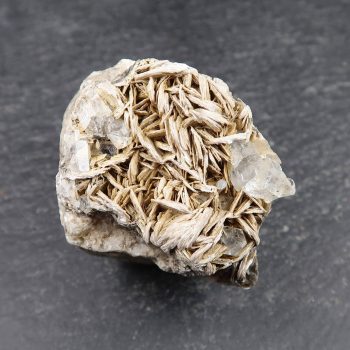
Aquamarine and Muscovite specimens
Original price was: £300.00.£250.00Current price is: £250.00. -

Aquamarine and Tourmaline specimens
Price range: £3.50 through £20.00 -

Aquamarine Cabochons
£15.00 -
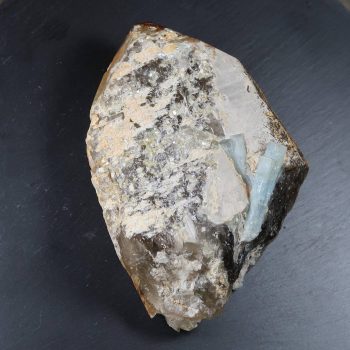
Aquamarine on Smoky Quartz with Mica
£100.00 -
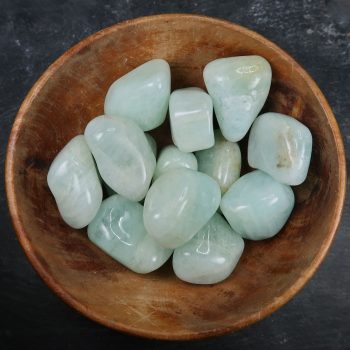
Aquamarine tumblestones
£3.00 -
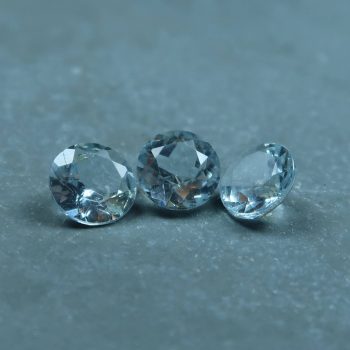
Aquamarine, Faceted
Price range: £5.00 through £35.00 -
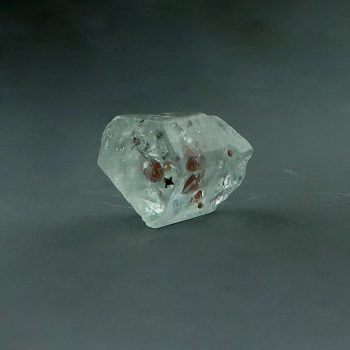
Garnet in Aquamarine specimens
£45.00
Appearance
Aquamarine is a hexagonal formation of Beryl, occurring in blue or blue-green colours. It can be transparent, translucent, or clear, pale or richly coloured – the more clear and colourful it is, the higher the quality.
Uses and History
Aquamarine is primarily used as a decorative stone, particularly for jewellery usage. High grade pieces are often cut en cabochon or faceted for jewellery usage.
Beryl is used as an ore of Beryllium, but it is unlikely Aquamarine would be crushed for ore – it’s value for jewellery and as mineral specimens is likely to be fair higher than its value as an ore.
The largest gem grade Aquamarine ever found was over 110KG, and the largest cut gem around 45KG – these crystals can be quite big!
Locales
Good quality specimens are found in Afghanistan, Australia, Brazil, China, Italy, Madagascar, Mongolia, Myanmar, Namibia, Nepal, Nigeria, Pakistan, Russia, the USA, and Vietnam. Lower quality specimens are found in many other locales.
Mineralogy
Aquamarine is pleochroic, and may appear colourless from one side and blue from another.
All Beryl shows up green-blue through a Chelsea filter.
Hazards and Warnings
Beryl is a beryllium based compound, which is a known carcinogen. Effects can include pneumonitis – please take care when mining, handling, cutting, etc.
Almost all rocks, minerals (and, frankly, almost all other substances on earth) can produce toxic dust when cutting, which can cause serious respiratory conditions including silicosis.
When cutting or polishing rocks, minerals, shells, etc, all work should be done wet to minimise the dust, and a suitable respirator or extraction system should be used.
Translations
Arabic:
- أزرق ضارب إلى الاخضرار
Hindi:
- अक्वामरीन
Portuguese:
- Água-marinha
Bengali:
Indonesian:
Punjabi:
- ਐਕੁਆਮਰਾਈਨ
English:
Italian:
- Acquamarina
Russian:
- Аквамарин
French:
- Aigue-marine
Japanese:
- アクアマリン
Spanish:
- Aguamarina
German:
- Aquamarin
Korean:
- 남옥
Thai:
- พลอยสีฟ้า
Gujurati:
- એક્વામારીન
- એક્વામરીન
Mandarin and Traditional Chinese:
- 海蓝宝石
Urdu:
